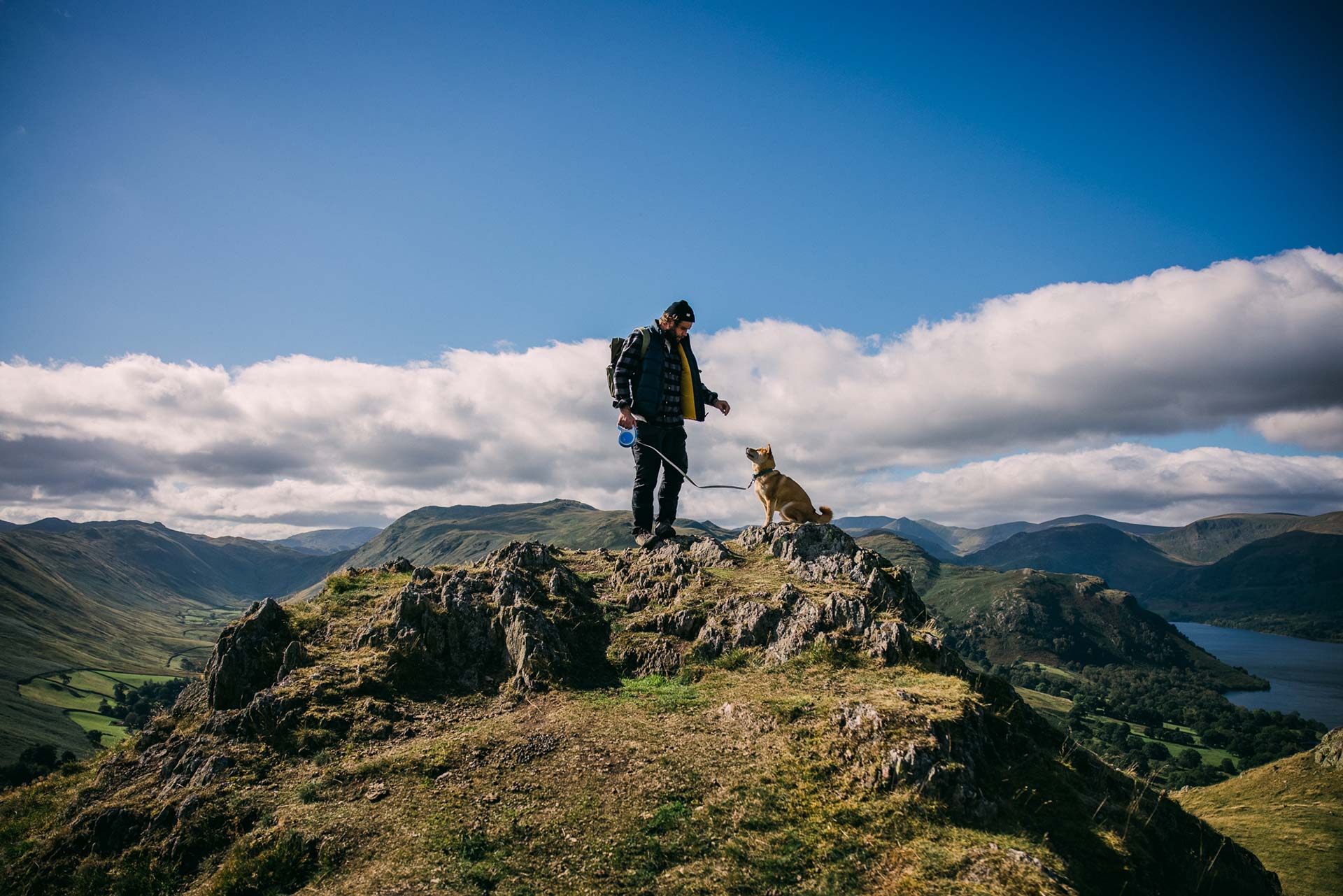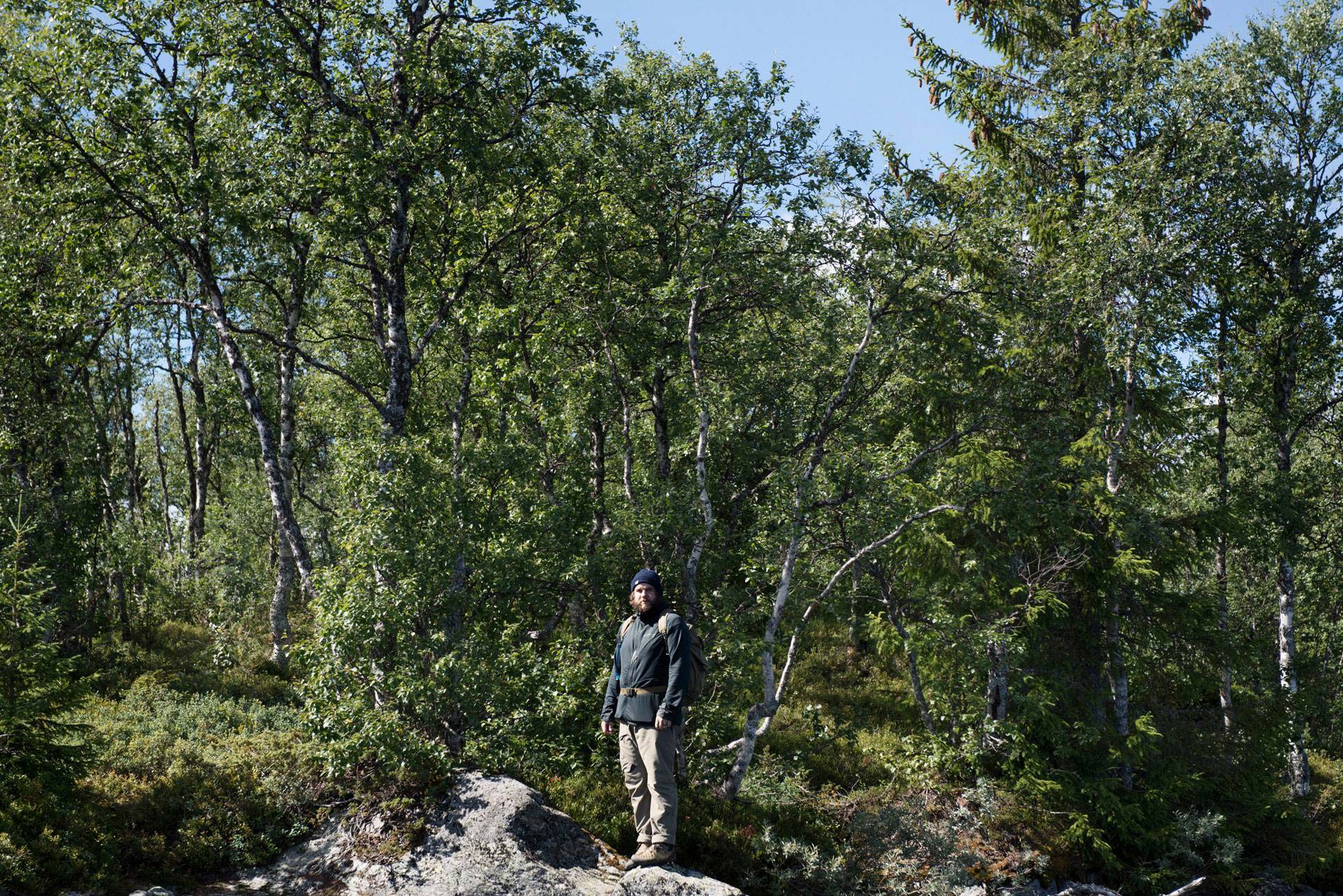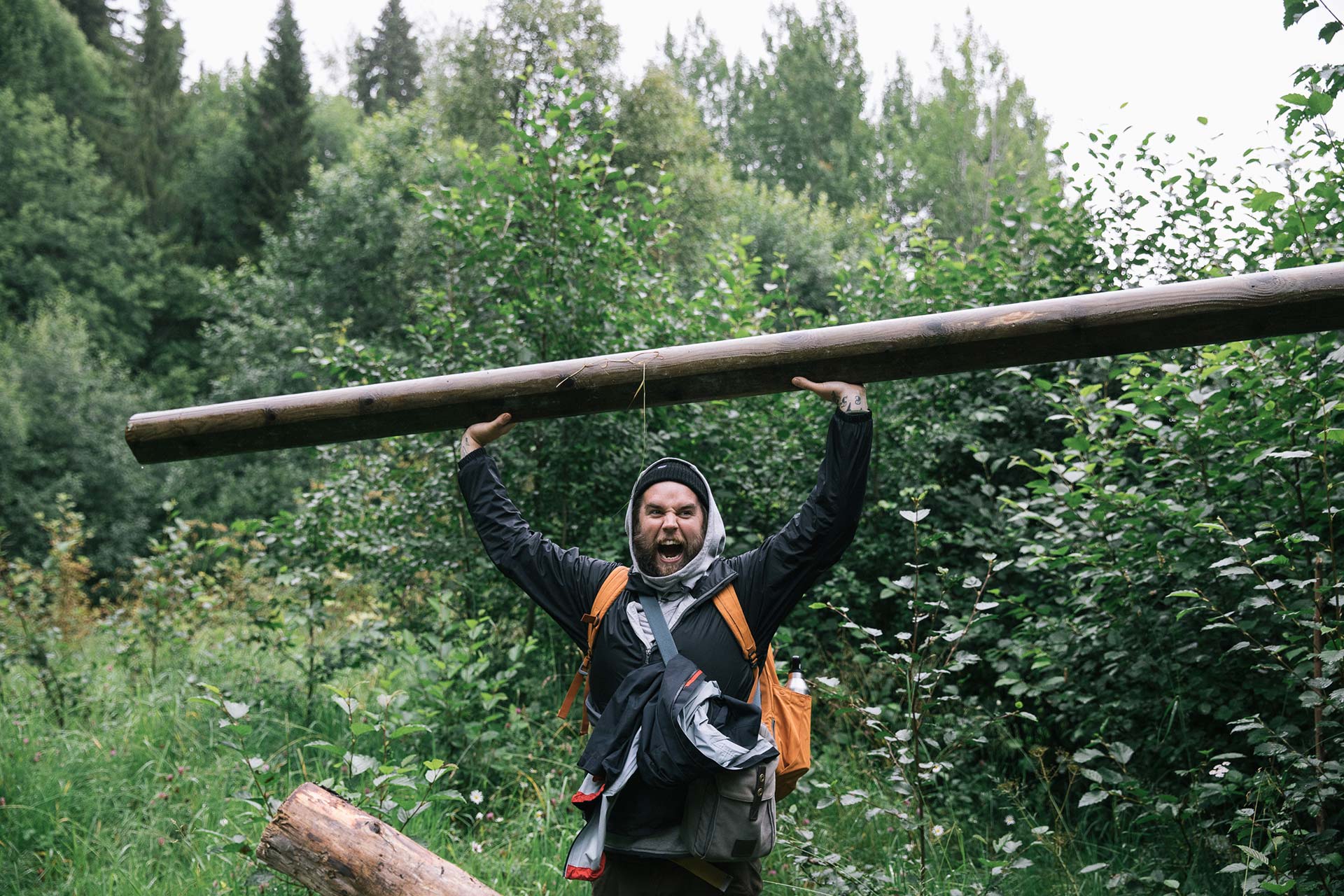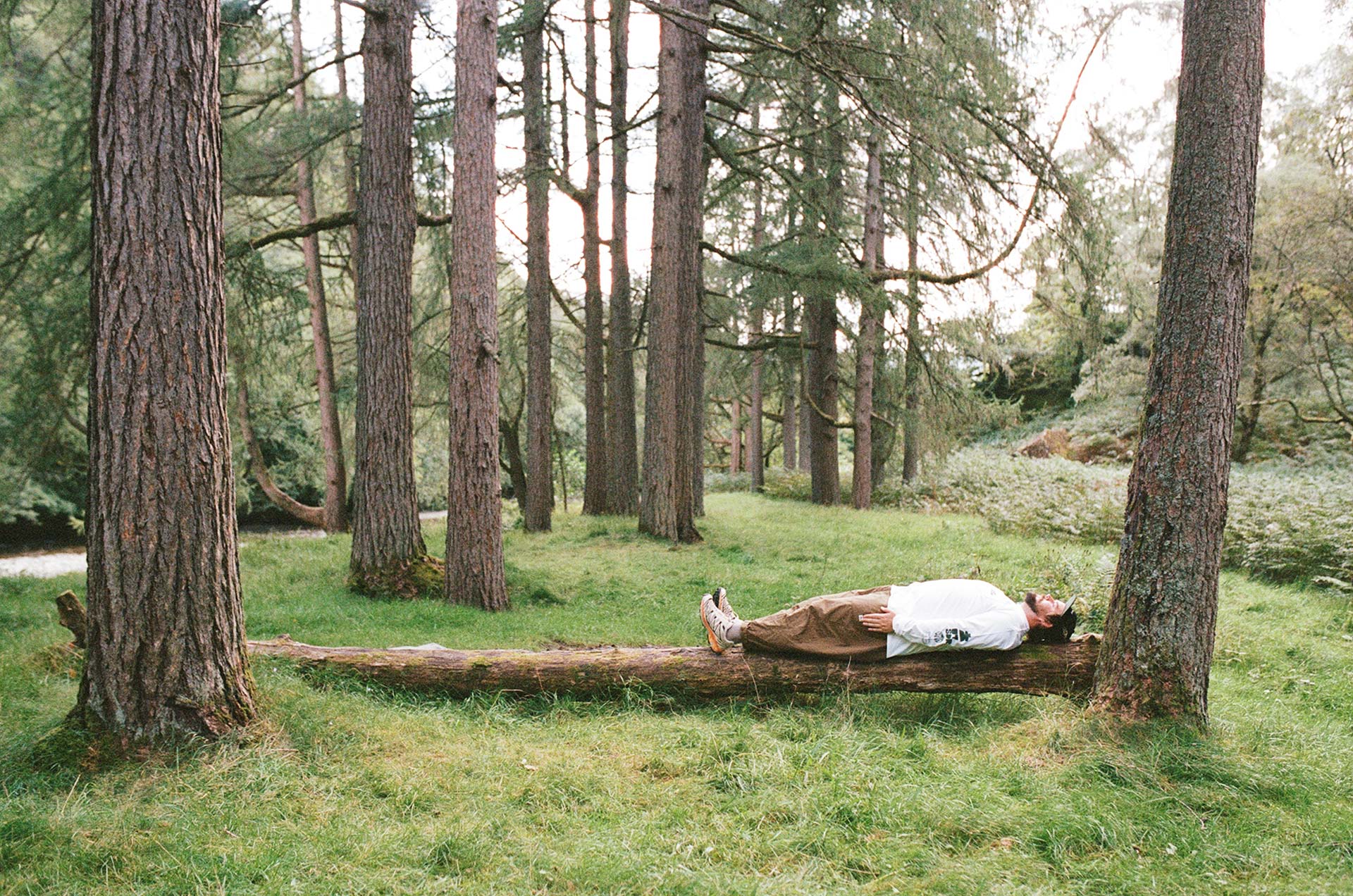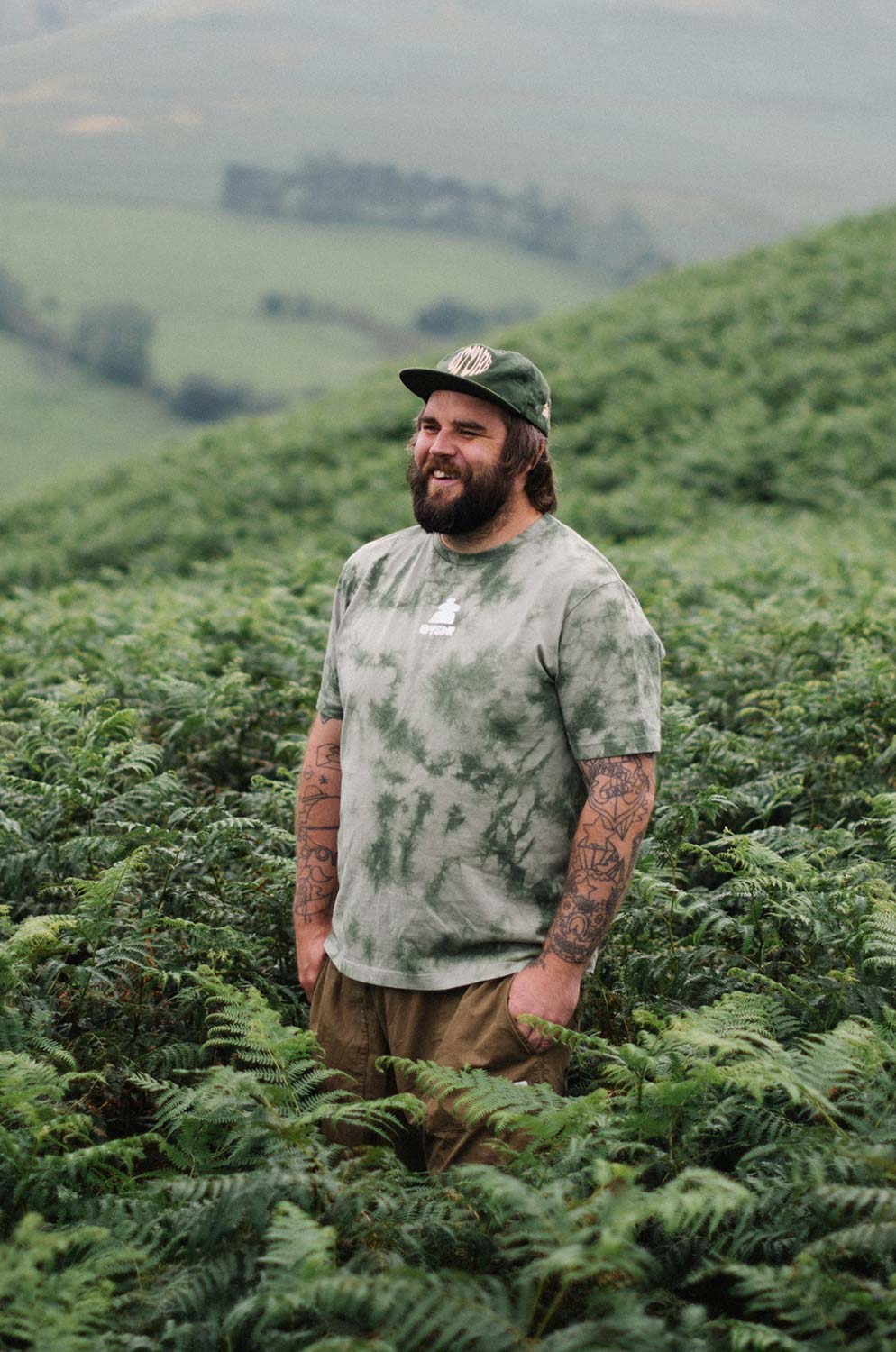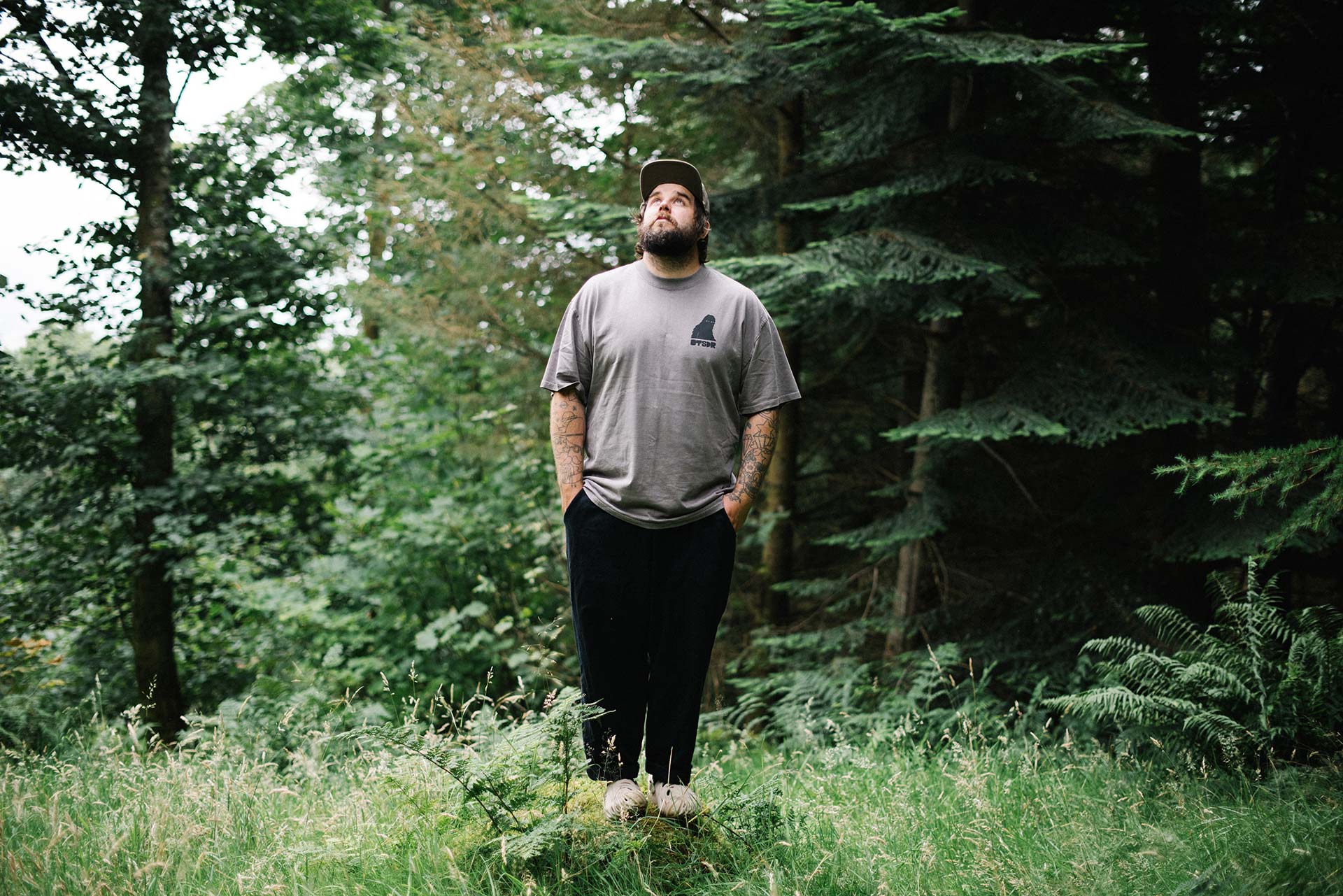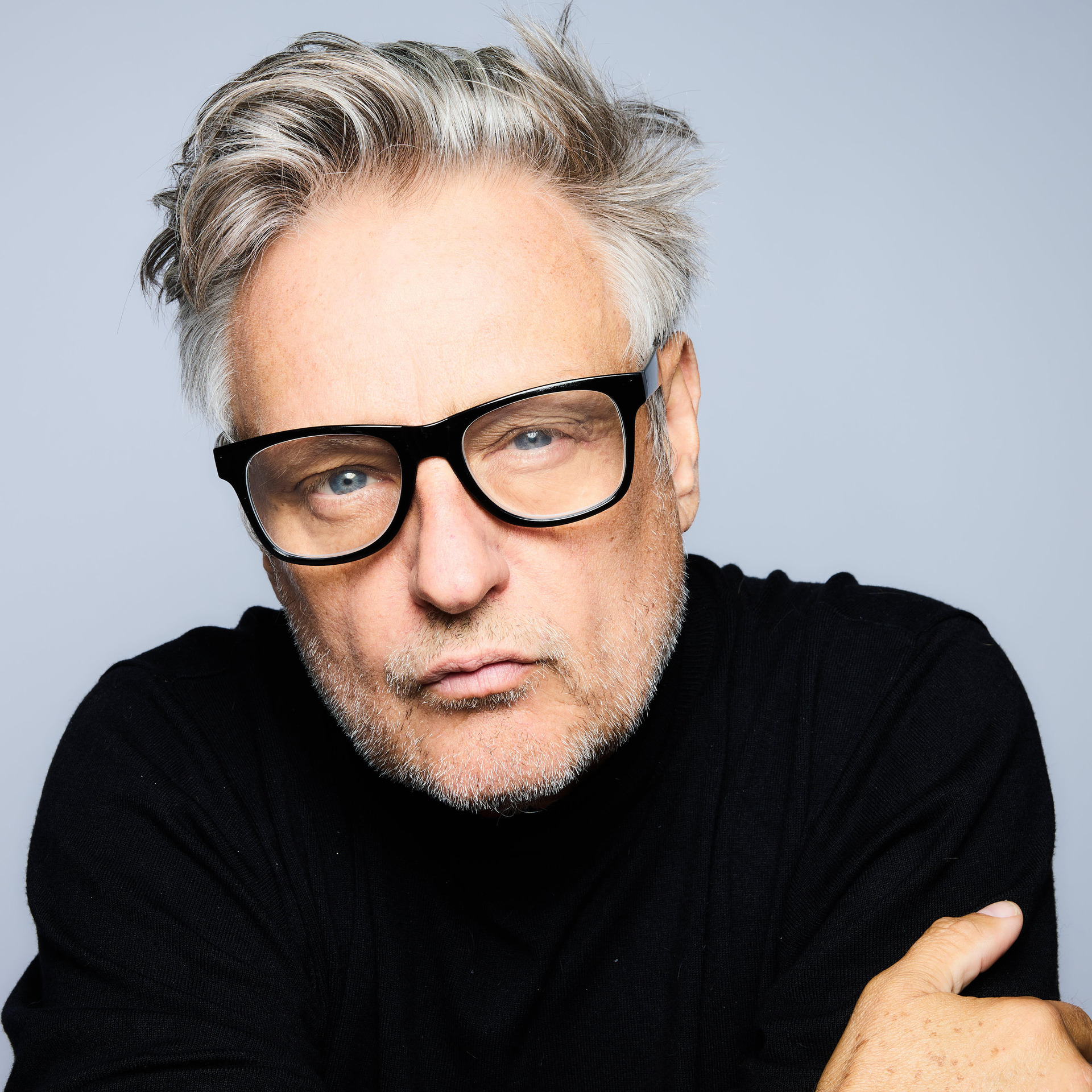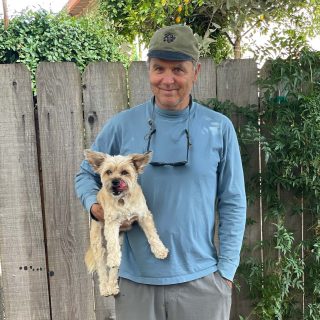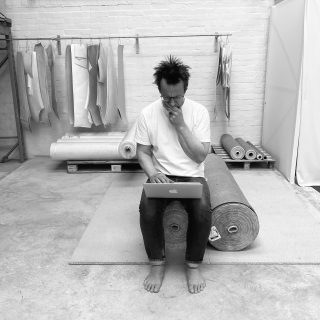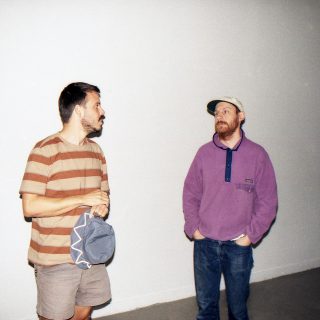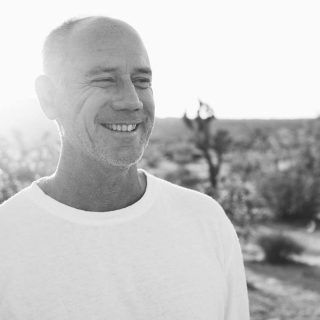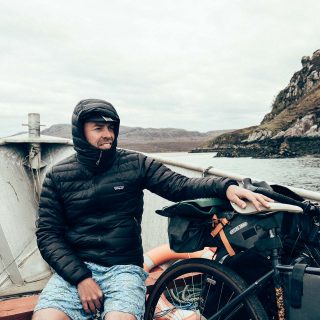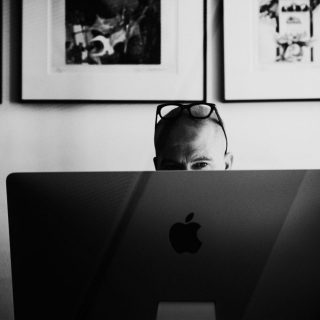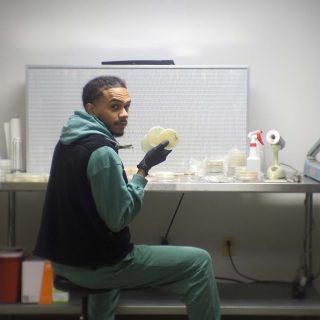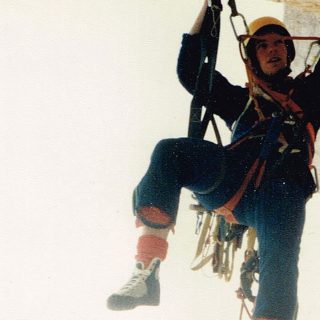An Interview with Jeffrey Bowman
Our chat with the outdoor oracle
Jeffrey Bowman is what you’d maybe call an outdoor oracle. Like some sort of flannel-shirted Nostradamus, he’s spent the last decade or so cannily predicting the movements and sub-cultures that have evolved in the outdoor world.
Released back in 2014, his book The Outsiders captured a new wave of brands, adventurers and artists who were rethinking life in nature—moving away from bold feats and expeditions towards a more everyday connection with the countryside.
His work for Lake District backpack brand Millican was equally prescient—pushing authenticity and long-form story-telling at a time when the most you could find on most outdoor brands websites were product stats and size-charts.
Just over a decade since the release of The Outsiders, we caught up with Jeffrey to talk about the book’s impact, his work today and his thoughts on where this ‘outdoor’ thing goes next…
You grew up in Barrow-in-Furness just down the road from the Lake District. How did you get into ‘the outdoors’?
It was from rollerblading and skateboarding. I got into them when I was around 11 years old, and it was very much an outdoor lifestyle—you were always outside and you were always checking the weather. When I was 18, I moved to Huddersfield, because there was a big rollerblading community there—and that’s when I got into graphic design and all that kind of stuff.
It wasn’t until I was around 25 that I realised there was something missing—so I started bouldering in Manchester, and then from there, I started going hiking, driving back up to the Lakes every weekend—being outdoors and being active.
Was that a feeling you were noticing with other people too at that time?
Not immediately. I worked for a couple of years in Manchester, teaching design at a college. One of the students lived in Norway, and she said, “You need to come and visit, because there’s a lot of young people doing what you do, but in the mountains.” So I went out and stayed with her and her partner for three weeks, and I was like, “Oh, this is where it’s at.”
When I got back I handed my notice in, and then a few months later I moved out there for about 18 months—and that’s when things started to appear on my radar. I started seeing brands like Poler Stuff and Best Made and Topo Designs—there was this ‘skate culture’, but for the outdoors appearing all of a sudden. While I still lived over there I did the first Outsiders book, and that’s when it tapped in with other people.
“It was very much like skate culture for the outdoors.”
When I moved back in 2015 I joined Millican backpacks. They were releasing this new collection which was really on point with how I saw things moving, and then that conversation started to just bubble up more and more. I think people were getting sick of living in the city—it was the beginning of that whole narrative of looking at your phone too much or looking at social media too much. So I think ten years ago it was the beginning of that—you could feel it—all these brands were showing up to really serve that community. And now everybody wants to be outside.
Thinking back to the early 2010s, it did very much feel like there was a new wave appearing. The big brands had maybe gotten too big, so this new wave of smaller DIY brands cropped up—kind of like how it had happened in the 70s.
Yeah, it was very much like skate culture for the outdoors. I think what was happening was this new generation or next generation of outdoor user was coming along who didn’t define the difference between being outside on your skateboard from being outside in the mountains, and so why not create outdoor brands that feel like something we recognise?
I think what I tried to do with the book was show that you can put The North Face next to Poler Stuff. It felt really natural to me to do that—it just seemed like a real natural progression. I think it’s only really been in the last few years that the industry’s really tried to figure out what it means, because ‘outdoor’ has been repositioned to ‘outside’.
Subscribe to our newsletter
How did people react to the book?
It did two things. One—it spoke to a bunch of people in that space who were trying to say the same thing but didn’t know how, so all of a sudden these brands had the book and they could go around and show people this is what they were trying to do. I think it helped a lot of small brands accelerate into bigger brands—they could take it to investment meetings and put it on the table and go, “This is where we’re heading and it’s going to be huge.”
And then on the other side of it—when I was at Millican and I was at trade shows, you’d have every marketing and creative person from brands like Rab, Montane, Berghaus and The North Face, all the way through to the Japanese brands coming to say how much they loved the book.
So I do think it did what it was meant to do—which was to make people stop and think, but I don’t think it truly landed until a few years ago. I think it was covid, in my opinion, which really made brands realise there was a totally different way to be outside.
What do you mean by that? Less performance-based?
Yeah—positioning going for a walk in the park next to someone climbing Everest and saying that these two things are valid to exist in the same space, because at the end of the day, it’s an experience of an environment, it’s not necessarily an experience of the activity.
How did this attitude inform what you did at Millican? That was very much built around what I suppose you’d call ‘story-telling’.
I remember going in and sitting down with Jorrit, who was the founder of the brand, and I said to him, “I’ve not come to sell bags, I’ve come to build a world and sell a story.” I think Millican was a playground for me to see how the book could come to light through a brand.
We did some really great stuff—we were early in the game of building communities before, whatever the word community means now. I think at that time people really preferred purpose and meaning over things being throwaway and transactional like they are today—and I think there’s going to be a big shift coming back to that now. I remember in the first five years we were putting out five or six minute long films where you didn’t even see a bag.
It was like an experiment and a platform to build a real-life version of the book, and it worked, and you could feel it working, and it was because there was also a space in the industry that was missing. We started to get picked up by places like Oi Polloi, and then we were in Cotswolds—because we were bridging that gap between lifestyle and the outdoors.
Everything about it looked and performed between those two worlds—so you could tell those stories and the product matched up. Whereas a lot of people try to force the story, because the product doesn’t stand up.
And although 2015 isn’t that long ago, that whole ‘content marketing’ thing hadn’t really sunk in yet for most brands. A brand might have a blog or a ‘journal’, but it would rarely get updated with anything worthwhile. But that seemed like a cornerstone for what you did—whether it was an article or a film.
Yeah exactly, and that’s still my approach today. Brands are built on stories. Even today, everything’s so much quicker, but when I work with brands on creative strategy, it is about these narrative arcs—how do we get people from today to tomorrow? The storytelling’s changed, so it’s not long-form content—it’s super transactional, and more immediate—but you can still pull people along for the ride.
What do you think people want now? I know there’s so much choppy, zany stuff out there that we’re kind of force-fed, but is that what we actually want?
I think at the moment there’s real struggle—and people don’t have much money—so I think people want purpose and meaning, they want to feel something. People are investing more time into things, because they can’t invest into the product, or if they are going to buy a product, then it needs to mean something. They want an investment, so I think that’s where content is moving to. Whatever format it is, people love stories—and I think that’s going to be more and more prominent as the world moves quicker and quicker.
And that’s why people are going outside—because you can slow down and it’s not just some transactional space where Instagram wants you to look at a reel and then go and make a purchase. You’re not getting anything back with that—so I think a brand that can give back now through storytelling will win out versus a brand that’s just like, “Buy this backpack because it’s cool.”
I suppose it’s kind of hypocritical too if your brand is built around slowing down and quality product, to be barraging your customers on social media with wacky videos all the time. Maybe it’s more about making something meaningful and long-lasting?
But it’s interesting because obviously there’s now this huge wave of young people growing up who digest content very differently—they have this content that’s very quick and they get it and they understand it. That’s why the gorpcore scene has really gone and shaken all these brands up a bit.
So now you’ve got all these outdoor brands trying to get into the Gen Z scene, but then the customers aren’t buying it—they want something that’s more true to the classic outdoor scene like Arc’teryx. Or then if you look at Salomon they’ve been picked up by this new generation, so they’ve repositioned themselves as mountain lifestyle rather than mountain running. So there’s two ways you can go there, but then you’ve got this whole middle-ground of brands that are just spewing content and products out that don’t make any sense to anybody. They’re chasing this new generation, when the reality is that the new generation wants authenticity and true stories. They don’t need Berghaus or Rab to be ‘gorpcore’, they want them to be who they are.
I’m not saying that these big brands can’t go after the younger audience, but I think there’s a better way of doing it than just sponsoring a community hike and taking a load of blurry pictures. There are more authentic ways to do it.
It’s easy to lose track when you’re scrabbling around trying to appeal to the new audience.
I think in today’s general age you need to either be one thing or another, but you can’t be both. If you look at Haglof’s recent rebrand, they’ve fully gone for the Gen Z technical outdoor thing—but they’ve really gone for it, whereas other brands sort of do a bit of this and a bit of that. And what happens then is that you’re leaving huge gaps.
The Outsiders was showing the outdoor industry there was a massive gap coming and that if you get it right you could be part of that culture. Everyone winces when I say it, but one of the only brands that really fully went for that gap was Passenger. It’s not necessarily what I would wear, but I can see how it’s taken off because they’ve captured the everyman who goes up to the Lakes for the weekend to paddle-board.
It’s the same with Trailberg or Montirex. They saw what lads in Liverpool were wearing and really honed in on that. What other gaps do you think exist now?
I think the biggest gap that I think the outdoor industry has created is this disconnection between fashion and functionality and putting them at two different ends against each other. This is where your Japanese brands come in, like Norbit. I think they’re a bit too expensive, but in Japan they see fashion and function as the same thing.
There’s a lot of cool little brands in Manchester filling that space—like Gander and Wawwa—mixing fashion and functionality together, without it meaning you’re going to the top of Everest.
So that’s one gap—making highly functional products from high-end fabrics performers and making it look good—but the other one is picking a lane for the core outdoor user. Montane does this really well—they serve this very specific core user and that’s what gets them more sales and awareness, because they’re the top of the triangle for that group.
And then you’ve got your gap fillers, like Patagonia—who straddle outdoor lifestyle through to performance, but they do it because they’re wrapped in that whole brand message and purpose. That’s how you can be cross category or have multiple categories and serve an alpinist, a fly fisher or a guy in the financial district with a down jacket on.
There’s a thread that runs through it all. What sort of projects do you work on today?
I largely do creative direction and creative strategy—working with small to mid-sized brands. It kind of touches on both outdoor and lifestyle brands—and I also run my own small brand called OTSDR which is just my own creative outlet. I generally work with little outsider brands who want to build on the momentum of what they’ve built—like Atom Packs, who I’m currently working with a lot.
They’re great. They’re made by a guy who used to work at Aiguille, aren’t they?
Yeah—when I met my wife, she lived in the same house with Tom who started Atom. He was literally stitching bags in the bedroom downstairs, and now he’s got our old Millican building with about 20 people in making bags, and he’s just in the office next door.
I suppose that’s a prime example of a brand with a clear niche and purpose—making custom ultralight backpacks. I know you made a second Outsiders book in 2019, which focussed on sustainability in the outdoors, but what do you think the Outsiders of 2025 would be like?
I think it would look more on the tech versus nature subject—the algorithm and AI versus the simplicity of life outdoors. And within that I think it would include what we talked about before, where brands meet fashion and function in the same space. A lot of what I look at is on the boundaries and the fringes of where these cultures collide—it’s not necessarily the centre point.
It’s usually those fringe things that become the big things further down the line.
Yeah, I’m really into fly fishing—I’ve been doing it for five years—and now everybody’s bringing in this whole fly fishing thing. And that’s interesting because that space has never seen anything other than tradition and now it’s like a lot of cool Japanese brands coming in. Brands like South2 West8 mix angling culture with lifestyle and performance in a really interesting way.
“The outdoors is still a massive untapped space for innovation—it’s about bringing in a new perspective.”
So there are these untapped cultures left that people are bringing in and that’s what I’m really intrigued by. It feels like the outdoors is still a massive untapped space for innovation. It’s about bringing in a new perspective. If you look at running, that’s an interesting space that has opened up, and suddenly you’ve got a lot of brands panicking and making running collections. But I think what running has done for the outdoor industry is bring a luxury exclusivity to it—which doesn’t really exist that much outdoors.
If you look at brands like Satisfy, it’s essentially a Paris-based fashion brand that makes running gear—they brought those two things together really well and now people are prepared to pay £240 for a pair of running shorts—not just because of their performance, but because they look good. So these little gaps are starting to emerge, and be filled really quickly.
Technology and the ‘authentic outdoor experience’ is often seen as at odds, but can they go together?
They’re going to have to, I think. There’s no getting away from this stuff—I’m sure there’ll be a lot of benefits and enhancements from the new tech, but it’ll also push people deep into outdoor experiences because they’ll be sick of being in that whole digital world. I think the natural world and being outside is that authentic experience and it will remain that and it’ll probably be heightened because of these digital worlds that we’re living in. The technology also helps connect people to the outdoors, so it will have its benefits—it’s hard to separate it.
I suppose my question before should have been what will the Outsider book of 2035 look like? Where do we go next? It feels like everything’s really splintering off.
I think that’s what makes it a really interesting and diverse culture—there’s countercultures within countercultures within countercultures now. Although we’re becoming more community focussed, those communities are becoming more insular in some weird way. Like with running, there are so many different styles of running now—whether that’s different groups or different aesthetic codes. It’s the same with hiking too, but I think that it’s all underpinned by wanting to get outside and being disconnected from the distractions of modern life.
Millican was named after Millican Dalton who lived in a cave in Borrowdale. He wrote that the reason he lived in the cave is because he was sick of living in London—and that was over 100 years ago. So it’s a common narrative—I just think that now more than ever the dial is turned up, and I think in ten years time outdoor experiences and nature will be of even higher value than it is today
It’s basic stuff really. We could maybe overthink this kind of thing, but is the bottom line that humans need to go outside and live in the now a bit?
Yeah—and it doesn’t matter how you get out there. That’s always been my point—everything I do is about making the outdoors accessible and inclusive. Even if you just go outside in your garden after this call and have a coffee—that’s an outdoor experience. Whether you want to dress in mountaineering gear, or just what you’ve got on now, it doesn’t matter—there shouldn’t be this separation or delineation.
